第63章
THE islands of Bali and Lombock, situated at the eastern end of Java, are particularly interesting. They are the only islands of the whole Archipelago in which the Hindu religion still maintains itself--and they form the extreme points of the two great zoological divisions of the Eastern hemisphere; for although so similar in external appearance and in all physical features, they differ greatly in their natural productions. It was after having spent two years in Borneo, Malacca and Singapore, that I made a somewhat involuntary visit to these islands on my way to Macassar. Had I been able to obtain a passage direct to that place from Singapore, I should probably never have gone near them, and should have missed some of the most important discoveries of my whole expedition the East.
It was on the 13th of June, 1856, after a twenty days' passage from Singapore in the "Kembang Djepoon" (Rose of Japan), a schooner belonging to a Chinese merchant, manned by a Javanese crew, and commanded by an English captain, that we cast anchor in the dangerous roadstead of Bileling on the north side of the island of Bali. Going on shore with the captain and the Chinese supercargo, I was at once introduced to a novel and interesting scene. We went first to the house of the Chinese Bandar, or chief merchant, where we found a number of natives, well dressed, and all conspicuously armed with krisses, displaying their large handles of ivory or gold, or beautifully grained and polished wood.
The Chinamen had given up their national costume and adopted the Malay dress, and could then hardly be distinguished from the natives of the island--an indication of the close affinity of the Malayan and Mongolian races. Under the thick shade of some mango-trees close by the house, several women-merchants were selling cotton goods; for here the women trade and work for the benefit of their husbands, a custom which Mahometan Malays never adopt.
Fruit, tea, cakes, and sweetmeats were brought to us; many questions were asked about our business and the state of trade in Singapore, and we then took a walk to look at the village. It was a very dull and dreary place; a collection of narrow lanes bounded by high mud walls, enclosing bamboo houses, into some of which we entered and were very kindly received.
During the two days that we remained here, I walked out into the surrounding country to catch insects, shoot birds, and spy out the nakedness or fertility of the land. I was both astonished and delighted; for as my visit to Java was some years later, I had never beheld so beautiful and well cultivated a district out of Europe. A slightly undulating plain extends from the seacoast about ten or twelve miles inland, where it is bounded by a wide range of wooded and cultivated hills. Houses and villages, marked out by dense clumps of cocoa-nut palms, tamarind and other fruit trees, are dotted about in every direction; while between then extend luxuriant rice-grounds, watered by an elaborate system of irrigation that would be the pride of the best cultivated parts of Europe. The whole surface of the country is divided into irregular patches, following the undulations of the ground, from many acres to a few perches in extent, each of which is itself perfectly level, but stands a few inches or several feet above or below those adjacent to it. Every one of these patches can be flooded or drained at will by means of a system of ditches and small channels, into which are diverted the whole of the streams that descend from the mountains. Every patch now bore crops in various stages of growth, some almost ready for cutting, and all in the most flourishing condition and of the most exquisite green tints.
The sides of the lanes and bridle roads were often edged with prickly Cacti and a leafless Euphorbia, but the country being so highly cultivated there was not much room for indigenous vegetation, except upon the sea-beach. We saw plenty of the fine race of domestic cattle descended from the Bos banteng of Java, driven by half naked boys, or tethered in pasture-grounds. They are large and handsome animals, of a light brown colour, with white legs, and a conspicuous oval patch behind of the same colour. Wild cattle of the same race are said to be still found in the mountains. In so well-cultivated a country it was not to be expected that I could do much in natural history, and my ignorance of how important a locality this was for the elucidation of the geographical distribution of animals, caused me to neglect obtaining some specimens which I never met with again. One of these was a weaver bird with a bright yellow head, which built its bottle-shaped nests by dozens on some trees near the beach. It was the Ploceus hypoxantha, a native of Java; and here, at the extreme limits of its range westerly, I shot and preserved specimens of a wagtail-thrush, an oriole, and some starlings, all species found in Java, and some of them peculiar to that island. I also obtained some beautiful butterflies, richly marked with black and orange on a white ground, and which were the most abundant insects in the country lanes. Among these was a new species, which I have named Pieris tamar.
Leaving Bileling, a pleasant sail of two days brought us to Ampanam in the island of Lombock, where I proposed to remain till I could obtain a passage to Macassar. We enjoyed superb views of the twin volcanoes of Bali and Lombock, each about eight thousand feet high, which form magnificent objects at sunrise and sunset, when they rise out of the mists and clouds that surround their bases, glowing with the rich and changing tints of these the most charming moments in a tropical day.